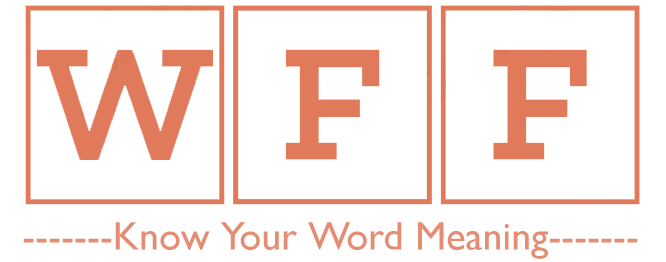Do you know what is the SQL Full Form? The full form of SQL is “Structured Query Language“. It is a programming language used for managing and manipulating relational databases. It is a standard language for relational database management systems (RDBMS) such as MySQL, Oracle, and Microsoft SQL Server.
Table of Contents
What is the SQL Full Form?
SQL Full Form – Structured Query Language
What is SQL?
Structured Query Language (SQL) is an essential language for managing and analyzing data in modern businesses. Whether you are a software developer, business analyst, or data scientist, learning SQL can help you gain insights from data more efficiently. It allows you to store, retrieve, and modify data in a structured and organized manner, making it a popular choice for data management in various industries.
History of SQL
SQL was first developed in the early 1970s by IBM researchers Donald Chamberlin and Raymond Boyce. Initially known as SEQUEL (Structured English Query Language), it was renamed to SQL in 1986. Since then, it has become a widely used language for managing relational databases.
Why is SQL Important?
SQL is important because it provides a standardized way to manage and manipulate large amounts of data. It allows businesses to organize, store and retrieve data in a way that makes sense to them. SQL is the backbone of many applications and websites, from social media platforms to financial institutions. It is an important skill for developers and data analysts.
SQL Basics: Understanding Database and Tables
What is a Database?
A database is a group of data stored in an organized manner. It can be anything from a simple grocery list to a complex system that manages customer information for a large corporation.
What is a Table?
A table is a collection of data arranged in rows and columns. Each row defines a single record, while each column denotes a specific piece of information about that record. For example, a table of customer information would have columns for name, address, and phone number.
Data Types in SQL
Data types in SQL refer to the kind of data that can be stored in a column. SQL supports various data types, including integers, decimals, dates, and strings.
Creating a Table in SQL
To create a table in SQL, you need to specify the table name and the columns it will contain. You also need to specify the data type and any constraints on the data, such as whether a column can contain null values.
SQL Operations: Select, Insert, Update, and Delete
SELECT Statement in SQL
The SELECT statement is used to get the data from the table. It allows you to specify which columns to retrieve and how to filter the results.
INSERT Statement in SQL
New data can be added to a table using the INSERT statement. The values for each column in the new row can be specified.
UPDATE Statement in SQL
The UPDATE statement is utilised to change the existing data in the table. It allows you to specify which rows to modify and what values to update.
DELETE Statement in SQL
The DELETE statement is utilised to extract data from a table. It allows you to specify which rows to delete.
SQL Functions: Aggregate and Scalar
Aggregate Functions in SQL
In SQL, aggregate functions are used to calculate a set of values. Examples of aggregate functions include SUM, AVG, and COUNT.
Scalar Functions in SQL
Scalar functions in SQL are used to perform calculations on a single value. Examples of scalar functions include UPPER, which converts a string to uppercase, and LENGTH, which returns the length of a string.
Advanced SQL Concepts: Joins, Views, and Transactions
Joins in SQL
When working with databases, it’s common to have data spread across multiple tables, each with unique information that we need to combine. SQL joins allow us to do just that by linking two or more tables based on a common field. There are different types of joins, such as inner joins and outer joins, each with its own use cases. Joins are essential for querying and analyzing large datasets.
Views in SQL
Views in SQL are virtual tables created by combining data from one or more tables in the database. They can be used to simplify queries and provide different perspectives on the data. Views can also be used to hide sensitive information from certain users, such as financial data. They are often used in complex databases to provide a simpler, more manageable way to access data.
Transactions in SQL
Transactions in SQL are used to maintain consistency and data integrity during database operations. A transaction is a series of SQL operations that are executed as a single unit of work. If any part of the transaction fails, the entire transaction is rolled back and the database is reverted to its previous state. Transactions are critical for ensuring that the data in a database remains accurate and reliable.
SQL in Industry: Use Cases and Applications
SQL in Data Analysis
SQL is widely used in data analysis as a way to query and manipulate large datasets. Data analysts use SQL to extract insights and trends from data stored in databases. It allows analysts to combine, filter, and sort data to identify patterns, correlations, and outliers. SQL is an essential tool for anyone who wants to work with data.
SQL in Business Intelligence
Business intelligence (BI) involves using data analytics to gain insights into business operations and make informed decisions. SQL is often used as the primary tool for extracting data from databases to create reports, dashboards, and visualizations that help business leaders understand their organization’s performance. SQL is critical for anyone working in BI.
SQL in Web Development
Web developers use SQL to create and manage databases that support web applications. SQL is used to store and retrieve data such as user accounts, product information, and transactional data. Developers use SQL to create queries that retrieve the information needed for the application to function, and to manage the overall data architecture of the application.
Common SQL Tools and Platforms
Popular SQL Tools
There are many SQL tools available for developers, analysts, and database administrators. Some popular tools include MySQL, Oracle, Microsoft SQL Server, and PostgreSQL. These tools provide a user-friendly interface for working with databases and often include additional features like data modelling and visualization.
Popular SQL Platforms
Cloud-based platforms like Amazon Web Services (AWS) and Microsoft Azure provide SQL as a service, allowing users to easily create and manage databases without the need for complex infrastructure. These platforms also include additional services like data warehousing and machine learning, making it easier to integrate SQL into a broader data strategy.
Future of SQL: Trends and Emerging Technologies
Current Trends in SQL
One trend in SQL is the incorporation of machine learning and artificial intelligence techniques. This includes using SQL to train and manage machine learning models, as well as to perform natural language processing and image recognition. Another trend is the growing popularity of cloud-based SQL services, as more organizations move their data to the cloud.
Emerging Technologies in SQL
One emerging technology in SQL is the use of blockchain technology to create distributed databases that are more secure and reliable. Another emerging technology is the use of SQL in data streaming, enabling faster and more efficient data processing for real-time applications. The future of SQL is exciting and full of possibilities.

Other SQL Full Forms List
If you want to know more about other full forms of SQL Word see the below table:
| Term | Full Form | Category |
| SQL | Structured Query Language | Programming Language |
| SQL | San Carlos (ca) | Airport Code |
| SQL | Squish Message Base Last Read Pointers | File Type |
| SQL | Sql Report Or Query | File Type |
| SQL | SONTALAI | Indian Railway Station |
| SQL | Strong Question Language | Messaging |
| SQL | Squelch | Space Science |
FAQs- What Is The SQL Full Form?
Q.1. What is the SQL Full Form?
Ans. The SQL Full Form stands for Structured Query Language.
Q.2. What is SQL used for?
Ans. SQL is used for managing and manipulating relational databases.
Q.3. Is SQL a programming language?
Ans. SQL is not a programming language in the traditional sense. Rather, it is a domain-specific language that is used specifically for working with databases.
Q.4. What are some common uses of SQL?
Ans. Common uses of SQL include retrieving data, updating data, inserting data, deleting data, creating tables, and modifying tables in a database.
Q.5. What are some industries that use SQL?
Ans. SQL is used in a variety of industries, including finance, healthcare, e-commerce, and more.
Thanks for reading What is the SQL Full Form? Bookmark our website Whatisfullform.com to know or read our collection of full forms.


